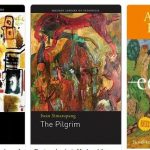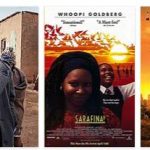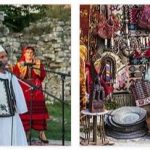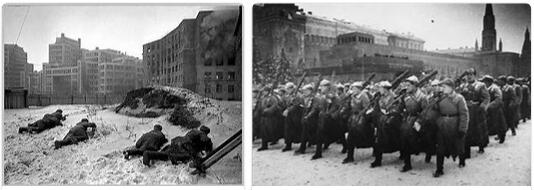ANTHROPOLOGY
The populations of Indonesia, or insular South-East Asia, present a great socio-cultural heterogeneity, also linked to the ecological variety of the region. From an economic point of view, the groups based on the coast have trade as their main activity, those in the hinterland are characterized by the cultivation of rice and the use of the plow pulled by buffalo, or by hunting and gathering (negritos), while the mountain dwellers resort to rotary hoe horticulture for subsistence. Considerable differences can be found both on the level of social organization and on that of religious affiliations. Majority groups of Java, Bali and Sumatra, with very advanced technology, they developed a religious and cultural syncretism with Hinduism and Islam which produced, among other things, refined forms of art (theater, dance, music) and literature. Grower groups such as i batak, bontok, dayak, iban, ifugao, ibaloi, nias usually live in villages protected by palisades and are equipped with many weapons of defense. Among them are widespread headhunting, ritual killing, cannibalism, the consumption of betel as well as numerous practices related to the rites of passage that have the purpose of modifying the body (tattoos, mutilation, circumcision, filing and avulsion of the teeth etc..). Land ownership belongs to the nuclear family or extended family; although some populations, such as eg. the dayaks, staying in collective houses, these do not represent political or economic entities but units that are connected to the territory on the basis of links built around the ritual activity. For Indonesia 2019, please check philosophynearby.com.
The populations of the Indonesia they speak languages of the Indonesian branch of the Maleo-Polynesian family. The negritos (semang, sakai, jakudn), pygmoid populations of the internal forest areas of Malacca, use languages that derive in part from the mon-Khmer family and in part from the Andaman language.
LANGUAGE AND LITERATURE
In the Indonesia over 700 languages have been registered, mostly belonging to the Austronesian group. Javanese (➔ Java), then Malay (➔ Malaysia), with Arab-Persian and even Indian cultural influences have a solid literary tradition. Malay, modified in structure and Latinized in the alphabet, was proclaimed the national language in 1945 as the official language under the name of Bahasa Indonesia. It was already the means of expression of the nascent modern literature by the ‘Balai Pustaka’ (1920-33), the Dutch colonial publisher, with numerous novels of a social nature. Among the authors, all Sumatran, born at the end of the 19th century, stand out A. Muis, Marah Rusli and Merari Siregar. In the following period, dominated by the magazine Pudjangga Baru («The new man of letters», 1933-42), a lyric of European influence flourishes (inspired by Dutch poets), while the language tries to modernize itself in terms of vocabulary and style. The most prestigious poet is A. Hamzah, inspired by a profound religiosity of universal value. In the same period, the psychological novel Belenggu («Catene», 1940) by A. Pane is noteworthy. After independence, the prose writer Idrus and the expressionist poet C. Anwar came to light, whose collections came out posthumously (1949) the year of his death (Deru campur debu “Chiasso mixed with dust”; Kerikil tajam. Yang terampas dan yang putus “Sharp stones. What has been plundered and broken “). In the dense panorama of the last decades of the 20th century. we remember, among the poets, S. Situmorang and, above all, Rendra, disliked by the authorities for his powerful poetry of social protest. Among the prose writers, Indonesia Simatupang stands out, who deserves credit for having received the speech of the nouveau roman, PA Toer, who stands out with his great historical novels, M. Lubis ; Ramadhan KH, who in Ladang Perminus («Il campo della P.», 1990) denounces the corruption of the business and political-administrative world, the writer N. Dini. And again the poet and novelist U. Kayam, B. Darma, P. Wijaya. Great resonance had Pengakuan Pariyem (“Le confessioni di P.”, 1981), novel in lyric prose, a veritable compendium of Javanese culture, the work of the poet L. Suryadi AG. The nature of various works by the Jesuit YB Mangunwijaya is also deeply Javanese. Finally, the strand of the absurd literature, whose best known representative is Danarto, should not be overlooked.
ARCHEOLOGY
The antiquity of the population in the Indonesian territory is attested by the remains of Homo erectus, who lived over half a million years ago, found in Java.
Among the megalithic cultures of Southeast Asia, two main phases that link the world can be distinguishedIndonesian with the Neolithic and the metal ages of Indochina and southern China. The first (monumental style), probably begun as early as the late Neolithic (2nd millennium BC), presents dolmens, menhirs, lithic sculptures, with few decorative motifs of a very simplified geometric type, and is perhaps represented by the remains of ancient lithic figures of ancestors of Java and Sumatra. The second, which is expressed in a type of dense decoration rich in curvilinear motifs (ornamental style), is related to the Indochinese cultures of the Dong-son Bronze Age and in some cases (central Borneo, central Flores) with China’s metallurgical production of the late Chou. Introduced in Indonesia before the beginnings of our era together with goldsmithing, weaving (ikat), new types of dwelling (with saddle and boat-shaped roofing), Mentawai Islands, Central Borneo, Celebes, Moluccas, Flores, Sumba, Tanibar, Mindanao).
MUSIC
The only centers of the Indonesia where significant musical traditions have developed are the islands of Java and Bali. In both there is a harmony set on two pentatonic scales: pelog (feminine) and slendro (masculine). The instruments mainly used are idiophones (gongs, metallophones, xylophones). The systematic use of orchestras (gamelan) with quite numerous ensembles is also characteristic and, since the instruments used have a fixed sound, the use of different orchestras is required for the performance according to the pelog or slendro scales.











